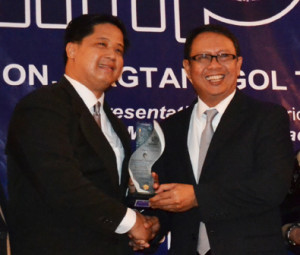

THE Philippines still has a long way to go in preparing its transport sector for the economic integration of the Association of Southeast Asian Nations (ASEAN) in 2015, where economic flow would be freer and competition tougher.
Arnel Gamboa, president of the Supply Chain Management Association of the Philippines (SCMAP), said the country still has a backlog in infrastructure, policies and logistics personnel.
“For one, in terms of road conditions, they don’t measure up to the conditions outside the Philippines,” Gamboa said, citing First World countries like the United States and Australia.
“Imagine, the roads that we have are just two or three inches thick versus in Australia, where they are probably five to six inches thick,” Gamboa said.
Besides the need for infrastructure, policies and their implementation should also be aligned, the SCMAP head said.
For example, Gamboa said the North Luzon Expressway and South Luzon Expressway implement RA 8794 (Anti-Overloading Act) differently.
Whereas NLEX measures only the gross vehicle weight (GVW) of trucks, SLEX measures both GVW and per axle load, Gamboa noted. Also, every local government unit has a different truck ban policy and color-coding scheme, he added.
He clarified it is not necessary to repeal the policies, but “to be more realistic in terms of practicality here in the Philippines” and harmonize the policies being implemented.
The supply chain executive said all problems boil down to the lack of infrastructure that has made the government restrictive and “limited the movement of vehicles especially trucks on the roads.”
Gamboa agrees there is a need for road links to the ports and that, although work to connect NLEX and SLEX through the skyway will start this year, there is still no clear government program to connect the port area to the connector road.
“We have to push government. We are a long way from the idea in terms of investment for infrastructure,” Gamboa explained.
The need for infrastructure was supported by Valenzuela Rep. Magtanggol Gunigundo I who spoke at SCMAP’s induction of officers on Feb. 7. He described the country’s infrastructure quality “at a very low end.”
Gunigundo cited an Asian Development Bank report for 2011-2012 that the Philippines’ state of infrastructure is moving marginally, and not fast enough to meet the needs of the business sector.
The report said that US$596 billion will be needed by the country between 2006 and 2015 in order for it to be ready ASEAN 2015, with an average investment of about US$60 billion a year, of which $16 billion is for transport projects alone.
Based on the Logistics Performance Index released by the World Economic Forum, the Philippines lags its ASEAN competitors in the global ranking of seaport and airport structure, landing 133rd and 115th, respectively, out of 137 countries.
“If we are having a hard time competing with each other in the Philippine environment, it’s going to get worse next year” when ASEAN opens its doors to the single aviation and shipping market, Gunigundo said.
He suggested that the three frameworks for ASEAN transport connectivity – ASEAN framework agreements on transport facilitation of goods in transit; ASEAN framework agreements on transport facilitation of interstate transit; and ASEAN framework agreements on transport facilitation on multimodal transport – must be studied, especially by logistics and supply chain professionals. ––Roumina M. Pablo




